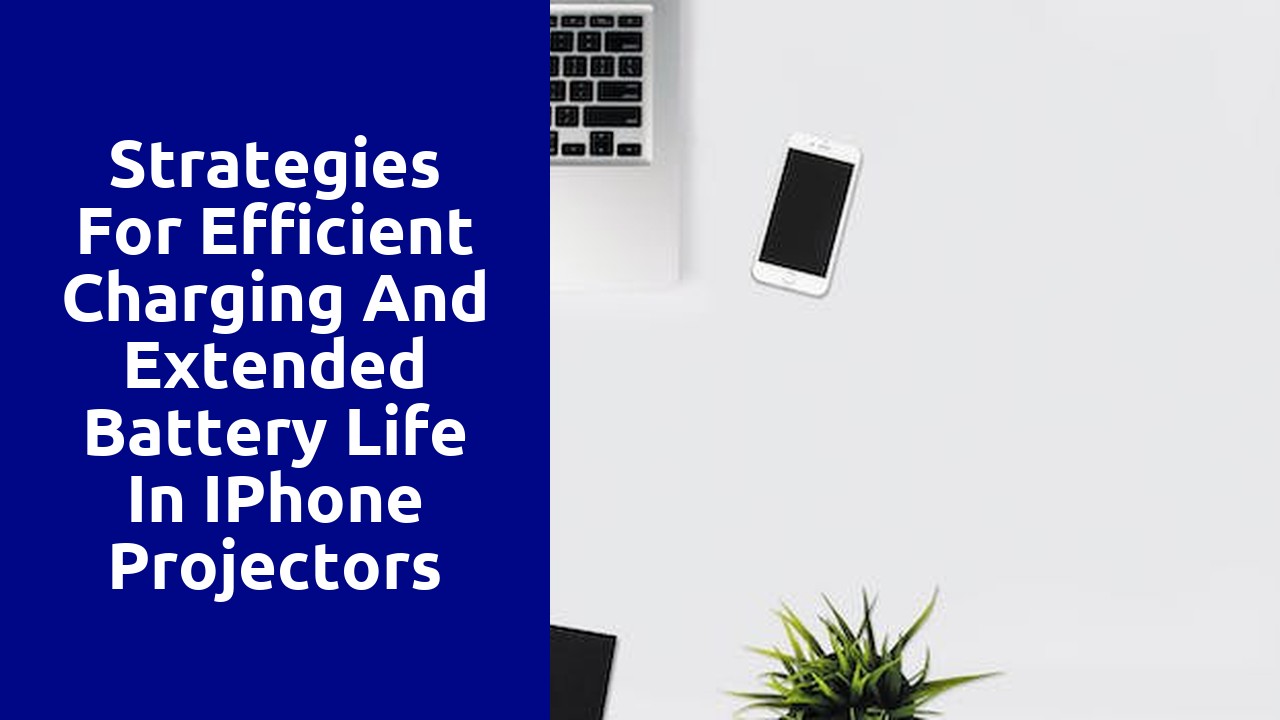

One important aspect to consider when using iPhone projectors is their power consumption. The amount of power a projector consumes directly affects its performance and overall functionality. Understanding the power consumption of iPhone projectors is crucial for users to make informed decisions and optimize their usage.
The power consumption of iPhone projectors primarily depends on the type of technology used and the brightness level. Traditional projectors often consume more power compared to newer LED or laser projectors. The brightness level also plays a significant role, as higher brightness levels tend to require more power. It is essential to choose a projector with optimal power consumption that suits your specific needs, whether it be for professional presentations, entertainment purposes, or education.
When it comes to conserving battery life on your device, optimizing display settings plays a vital role. The display screen is one of the biggest power consumers, and by making a few simple adjustments, you can significantly extend your device's battery life.
Firstly, consider reducing the screen brightness to an optimal level. Higher brightness levels require more power, so keeping it at the lowest comfortable setting can help conserve battery usage. Additionally, consider enabling auto-brightness, which adjusts the screen brightness based on ambient lighting conditions. This way, your device will automatically adapt to different environments, minimizing unnecessary power consumption. By taking control of your display settings and making these adjustments, you'll be able to enjoy extended battery life on your device throughout the day.
One of the key ways to optimize the efficiency of your device's charging is by minimizing the number of background processes and apps running in the background. These processes and apps consume significant amounts of power, leading to slower charging speeds and decreased battery life. By closing unnecessary apps and disabling background processes, you can ensure that your device is solely focused on charging, allowing it to recharge more quickly and efficiently. It is advisable to regularly check your device's settings and close any unused apps or processes to maximize your charging speed.
Furthermore, some apps and services are notorious for their power consumption, even when running in the background. Social media apps, news apps, and streaming services are often culprits of draining your device's battery life. It is worth considering whether you truly need these apps to be running in the background while your device is charging. By disabling or limiting the background activity of these power-hungry apps, you can significantly improve the charging speed of your device. Additionally, closing unnecessary apps and ending background processes can also prevent any potential glitches or crashes, leading to a smoother charging experience overall.
Power-saving modes and features can greatly benefit both the environment and our personal finances. By utilizing these options, we have the ability to significantly reduce our energy consumption and contribute to the global effort of mitigating climate change. These modes and features are designed to optimize energy use by automatically adjusting settings on our devices, such as smartphones, laptops, and desktop computers, when they are not in use. Often, they involve dimming the screen, reducing processor speed, or even putting the device into a sleep or standby mode. By making these adjustments, we can conserve energy and extend battery life, saving both money and resources in the process.
In addition to conserving energy, power-saving modes and features can also promote healthier device usage habits. Many of us have undoubtedly experienced the frustration of a drained battery at a crucial moment. By activating these modes, we can prolong the lifespan of the battery and avoid unexpected interruptions. Moreover, by reducing our reliance on constant charging and actively managing our energy consumption, we become more aware of how we use our devices and develop a sense of responsibility towards using them efficiently. Ultimately, by embracing power-saving features, we not only improve the sustainability of our actions but also cultivate a more balanced and considerate relationship with our technological devices.
As we rely more and more on our devices, managing external power sources becomes a crucial task for many individuals. Whether it's a smartphone, tablet, or laptop, the need for extended usage has become a priority. Thankfully, there are several ways to effectively manage and optimize external power sources to ensure a continuous and uninterrupted power supply.
One of the most basic yet effective strategies is to carry a portable power bank. These compact devices can provide an additional power boost to your devices on-the-go. When choosing a power bank, consider its capacity, output power, and compatibility with your devices. Opt for a power bank with multiple USB ports, allowing you to charge multiple devices simultaneously. Additionally, it's advisable to invest in power banks that offer fast charging capabilities to minimize downtime.
Properly maintained charging cycles are essential for preserving the longevity and efficiency of electronic devices. In today's fast-paced world, we rely heavily on our smartphones, tablets, and laptops to stay connected and facilitate various tasks. However, many users underestimate the importance of proper charging habits, neglecting the impact it can have on the overall performance and lifespan of their devices.
One key aspect of maintaining charging cycles is avoiding overcharging. It may be tempting to leave our devices connected to the charger overnight or for prolonged periods, but this can lead to negative consequences. Overcharging can cause the battery to overheat, resulting in diminished battery life and potential damage to the device. To avoid this, it is advisable to unplug the charger once the battery reaches its full capacity.